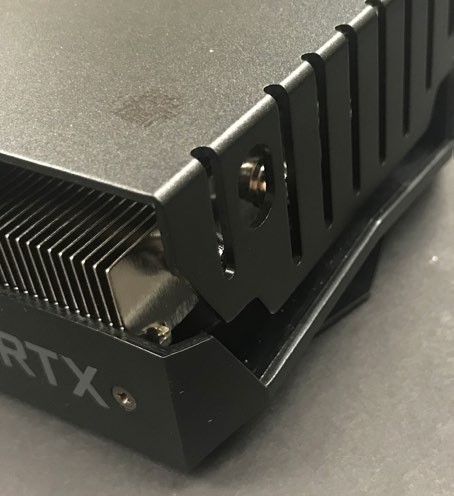NVIDIA’s GeForce RTX 2080 Super is very, very fast, but if you’re looking to take things up a notch with factory overclocks and custom cooling solutions, there are plenty of cards out there vying for your money.


ASUS ROG Strix GeForce RTX 2080 Super gaming Advanced
EVGA GeForce RTX 2080 Super XC ultra, overclocked
GALAX GeForce RTX 2080 Super EX 1-click OC
Gigabyte GeForce RTX 2080 Super gaming OC
MSI GeForce RTX 2080 Super gaming X Trio
Palit GeForce RTX 2080 Super White gamerock
Zotac Gaming GeForce rTx 2080 Super Triple Fan


ASUS ROG STRIX GEFORCE RTX 2080 SUPER GAMING ADVANCED
AT A GLANCE
1,680mHz/ 1,860mHz (OC mode)
2x 8-pin
29.97 x 13.04 x 5.41cm
This is a premium card crammed with nearly everything you could want, and then some. However, the cooler design hasn’t changed coming from the GeForce RTX 2080, with three “axial-tech” fans and a faceted shroud with rGb LeDs on the edges.
It’s one of the heaviest cards here, but also one of the most solidly built. The plastic shroud feels really well put-together, and there’s an additional metal brace that wraps around the card to prevent excessive torsion and lateral bending of the pCb. This brace is mounted to both the backplate and the I/O shield, fully integrated into the card’s design.
In addition, you get six heat pipes and a massive finned heatsink that occupies nearly a full three slots. This helps ASuS maximise the total surface area available for heat dissipation, while allowing the fans to run at lower speeds in less demanding scenarios.
The heat spreader boasts of ASuS maxContact Technology, which uses precision machining to create a surface that is flatter and more even. This maximises contact between Gpu and heat spreader, translating to more efficient heat transfer. A separate surface interfaces with the VRM circuitry (10+2-phases) via thermal pads, so ASuS hasn’t neglected these crucial components either.
The three axial-tech fans have a smaller fan hub to allow for longer blades and a barrier ring that increases structural integrity and downward air pressure. They are also Ip5X dustresistant and our numbers in the results page will speak to just how well ASUS’ entire thermal design works.
The fans support semi-passive operation too, so they’ll stop spinning entirely to reduce noise when the Gpu temperature is below 55°C. This technically only works in Quiet mode, but you can also enable it in performance mode through the Gpu Tweak II software.
The card requires two 8-pin power connectors, compared to the 6-pin and 8-pin combo on the Founders edition and some other custom cards. each connector has a white LeD that signals secured power connection, which comes in handy for troubleshooting. At the end of the card, you’ll find two 4-pin fan connectors to peg your fans to the Gpu temperature and an rGb header for hooking up an LeD strip to Aura Sync.




EVGA
GEFORCE RTX 2080 SUPER XC ULTRA, OVERCLOCKED

AT A GLANCE
1,650mHz/ 1,845mHz
1x 8-pin, 1x 6-pin
26.98 x 11.12 x 6.81cm
$1,119
EVGA’s custom GeForce RTX 2080 Super looks quite different from all the other cards here, in a good way. The transparent cooling shroud is distinctive, and it lets you peek through to the huge finned heatsink. The design is relatively subdued, owing to muted colours and plain seethrough plastic.
It’s really thick though, requiring a full three slots in your case. It uses EVGA’s new iCX2 cooling design, with improvements to the baseplate, heatsink, and fans for better cooling performance.
For starters, a new “platepunched” design improves the baseplate’s contact with key components and the heatsink itself; the cooler also relies on a heat pipe that makes direct contact with VRM components. In addition, there are crossdrilled perforations in the heatsink itself for air to move more freely throughout, and certain fins are L-shaped to direct air to areas that require the most cooling. A tweaked heatspreader has better contact with the GPU for more efficient heat transfer, and it interfaces with the rest of the heatsink array by way of six heat pipes.
The dual fans here use hydraulic-dynamic bearings, which are supposed to provide better performance with less noise. each fan blade has a raised “E” from the EVGA logo stamped onto it, but that’s not just decorative. It supposedly creates a smoother slipstream to improve airflow.
The fans stop spinning when the card isn’t working as hard, starting again only when Gpu temp hits 55°C.
There’s a metal backplate on the card to protect the PCB against flexing. The metal has a rough, granulated texture that I find quite attractive. It interfaces with some components below using thermal pads, so it doubles as a passive heatsink of sorts too.
Power is supplied from one 6-pin and one 8-pin connector. Also, the rear I/O features three Displayport 1.4 connectors, one HDmI 2.0b, and one uSb-C output. These features are the same as on the the Founders edition, but the I/O plate has been extended to match the thickness of the cooler. That gives a slightly disproportionate look and there’s a lot of empty space to contend with.


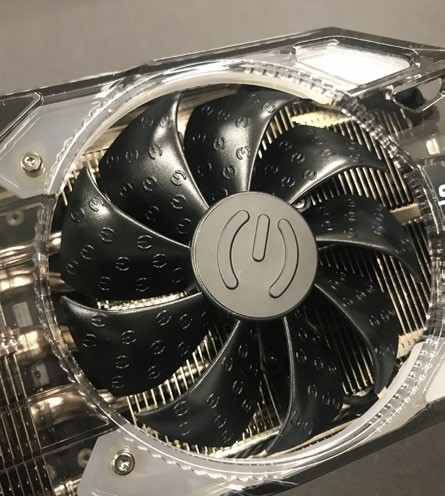

GALAX
GEFORCE RTX 2080 SUPER EX 1-CLICK OC

AT A GLANCE
1,650mHz/ 1,845mHz
1x 8-pin, 1x 6-pin
29.5 x 14.30 x 5.20cm
$1,119
Here’s a no-nonsense card lacking many of the bells and whistles found on some of the other models. You get a plain dual-fan cooler and a simple black cooling shroud.
What really matters is the cooler, and the card comes with two 100mm fans that support semi-passive operation for lower noise. Compared to the fans from its GTX 10-series, GALAX says the new fan design has increased airflow by up to 90 per cent. Static pressure performance is also improved, which means the fans should be able to drive air through the dense heatsink more effectively. In addition, total surface area of its heatsink fins has been increased by around 50 per cent.
That said, the card feels pretty light in hand, and it lacks any further reinforcements such as the metal brace on the ASuS. It doesn’t have the reassuring heft of the other cards, but that’s not necessarily a bad thing. At least it doesn’t feel as if your card is going to pull the motherboard off its standoffs entirely.
Of course, no gaming card would be complete without rGb lighting, but it’s just confined to the fans here. It’s not really that visible if you mount the Gpu horizontally within an upright case, and there’s no lighting on the backplate.
The 1-click OC moniker in its name is probably its most defining feature. At first, I thought it might be some dedicated hardware button to boost clock speeds, but it’s really just a setting in GALAX’s Xtreme Tuner software. It boosts the card up to a 1,665mHz base clock and 1,860mHz boost clock, which is still less aggressive than what the ASUS offers in OC mode. In fact, I’d say that GALAX’s implementation is really just a basic OC mode; the “1-click” branding making it sound a lot more novel than it really is.
The card relies on one 6-pin and one 8-pin connector for power, and in terms of display connectors, it has three Displayport 1.4 and two HDmI 2.0b outputs.




The card lacks a USB-C port.
GIGABYTE
GEFORCE RTX 2080 SUPER GAMING OC

AT A GLANCE
1,650mHz/ 1,845mHz
1x 8-pin, 1x 6-pin
28.65 x 11.45 x 5.02cm
$1,220
If you don’t want your card lighting up your entire case, this one will tickle your fancy. The only LeDs are found behind the Gigabyte logo on its side, with the cooling shroud and fans otherwise blissfully unadorned.
The WindForce 3X cooling system on this particular card features what Gigabyte refers to as “alternate spinning “ fans. This isn’t exactly a new feature for Gigabyte, but it’s supposed to solve the problem of turbulent airflow, which can become an issue when you’ve got three fans. each 82mm fan basically rotates in alternate directions, where the middle fan rotates clockwise while the other two rotate counter-clockwise. This ensures that the air between any two fans is flowing in the same direction.
The fans blades themselves also feature a small, triangular protrusion. This is supposed to help guide air over the ridges on the blade’s surface for further enhance airflow. Of course, semi-passive cooling is supported too, and the fans will stop spinning entirely when the card isn’t working as hard.
The heatsink itself is comprised of six composite copper heat pipes and a rather large finned array. The heat pipes are flattened where they come into direct contact with the Gpu, and there’s also a separate metal contact plate that interfaces with the VRM and MOSFETs. Gigabyte is one of the few brands that continue to design direct contact between the Gpu and heat pipes. ASUS used to do this with its DirectCu II coolers, but they’ve since switched over to a nickel-plated copper base.
Elsewhere, the card comes with a solid metal backplate that helps confer extra structural rigidity to the pCb. This also comes with thermal pads of its own and so functions as a passive heatsink.




MSI GEFORCE
RTX 2080 SUPER GAMING X TRIO

AT A GLANCE
BASE/BOOST CLOCK
1,650mHz/ 1,845mHz
POWER CONNECTORS
2x 8-pin
DIMENSIONS
32.8 x 14 x 5.65cm
PRICE
$1,288
The MSI GeForce rTX 2080 Super Gaming X Trio is another huge card, needing over 30cm of clearance in your chassis and three slots at the rear.
It also has one of the more striking designs of the lot, featuring carbon fibre accents, assymmetrical fans, and LeDs set into the edges of the cooling shroud. If you don’t like the lights, you can turn them right off, and the card will still look quite good.
The fan design is the most interesting, with the leftmost fan quite obviously smaller than the other two. I don’t think this actually serves any particular purpose though; it seems like mSI is just trying to maximise available space with as many big fans as it can. Largeer fans push more air at lower speeds, which means less noise overall. The Tri-Frozr cooler uses three double ball bearing Torx 3.0 fans that employ a mix of dispersion and traditional fan blades. The former has a special curved blade which accelerates airflow, while the latter serves to push air down to the heatsink.
The fans support semipassive operation, and they’ll sit idle when the Gpu core temperature falls below 60°C.
The heatsink itself features design tweaks to let air pass through more smoothly and channel air directly onto the heat pipes. mSI refers to this as its “Wave-Curved 2” fins, and they’re basically notches in the normally straight edges of the heatsink fins that resemble undulating waves.
The GPU die comes into contact with a nickel-plated copper base plate, which transfers to a tightly-bunched arrangement of seven copper heat pipes. The heat pipes are arranged right next to each other where they touch the base plate, which mSI says helps maximise heat dissipation. A dedicated aluminium plate also covers the VRM and MOSFETs.
On the other side of the pCb, you’ll find a metal backplate with a silver, brushed metal finish. It’s very attractive, and like most cards, also feature thermal pads doubling up as a passive heatsink. The various holes cut in it supposedly help improve airflow.

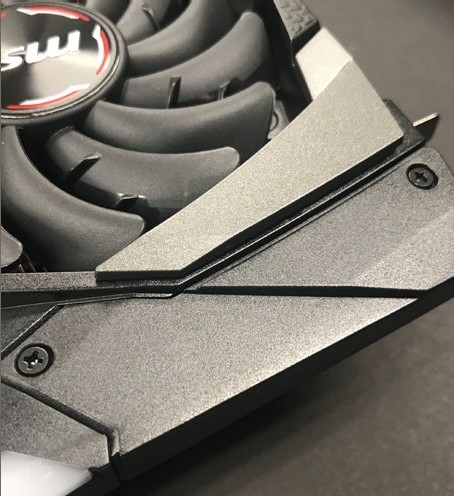

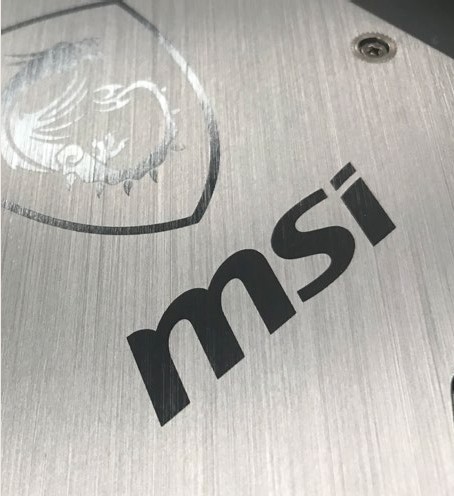
PALIT
GEFORCE RTX 2080 SUPER WHITE GAMEROCK

AT A GLANCE
1,650mHz/ 1,830mHz
2x 8-pin
29.2 x 13 x 5.96cm
$1,165
While the other cards are mostly old models updated with the new GeForce rTX 2080 Super Gpu, palit has decided to switch things up a little with their White Gamerock (WGr) edition cards.
I’ve never been a fan of the older Gamerock design and their garish blue cooling shroud, and the WGr puts that problem to rest. It is really one of the betterlooking cards palit has put out in a while, reminding me a little of GALAX’s Hall of Fame cards. The white cooler fits in nicely if you’re shooting for a blackand-white build.
The cooler has a distinctive Y-shaped rGb feature between the two fans, which can be customised using palit’s Thundermaster software. The Gamerock logo on the backplate lights up too, and these can be programmed with your preferred lighting effects or synced with the GPU’s temperature.
The fans themselves use what palit calls TurboFan blade 2.0, and they’re supposed to provide both high airflow and static pressure. They utilise a 6-pole fan motor with a smaller hub for a longer blade length.
A copper base sits on top of the Gpu, and heat is channelled to the rest of the heatsink via five thick copper heat pipes. Thermal pads on metal plates around the copper base then interface with components like the memory, VRM, and mOSFeTs.
There are no thermal pads on the backplate though, but it should still serve to protect the pCb.
One unique feature the card has is the dual BIOS switch. BIOS 1 activates the card’s overclock, pushing the base clock to 1,650mHz and boost clock to 1,830mHz.
BIOS 2 is intended more as a recovery measure from failed manual overclocks. It sets clock speeds back to reference levels, but it also enables semi-passive operation for the fans, where they stop spinning once the Gpu temperature falls below 60°C. I find it strange that this mode is only available in the recovery bIOS, which most people won’t be using as a standard operating mode for this card.
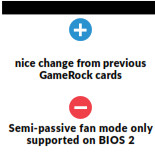



ZOTAC
GAMING GEFORCE RTX 2080 SUPER TRIPLE FAN
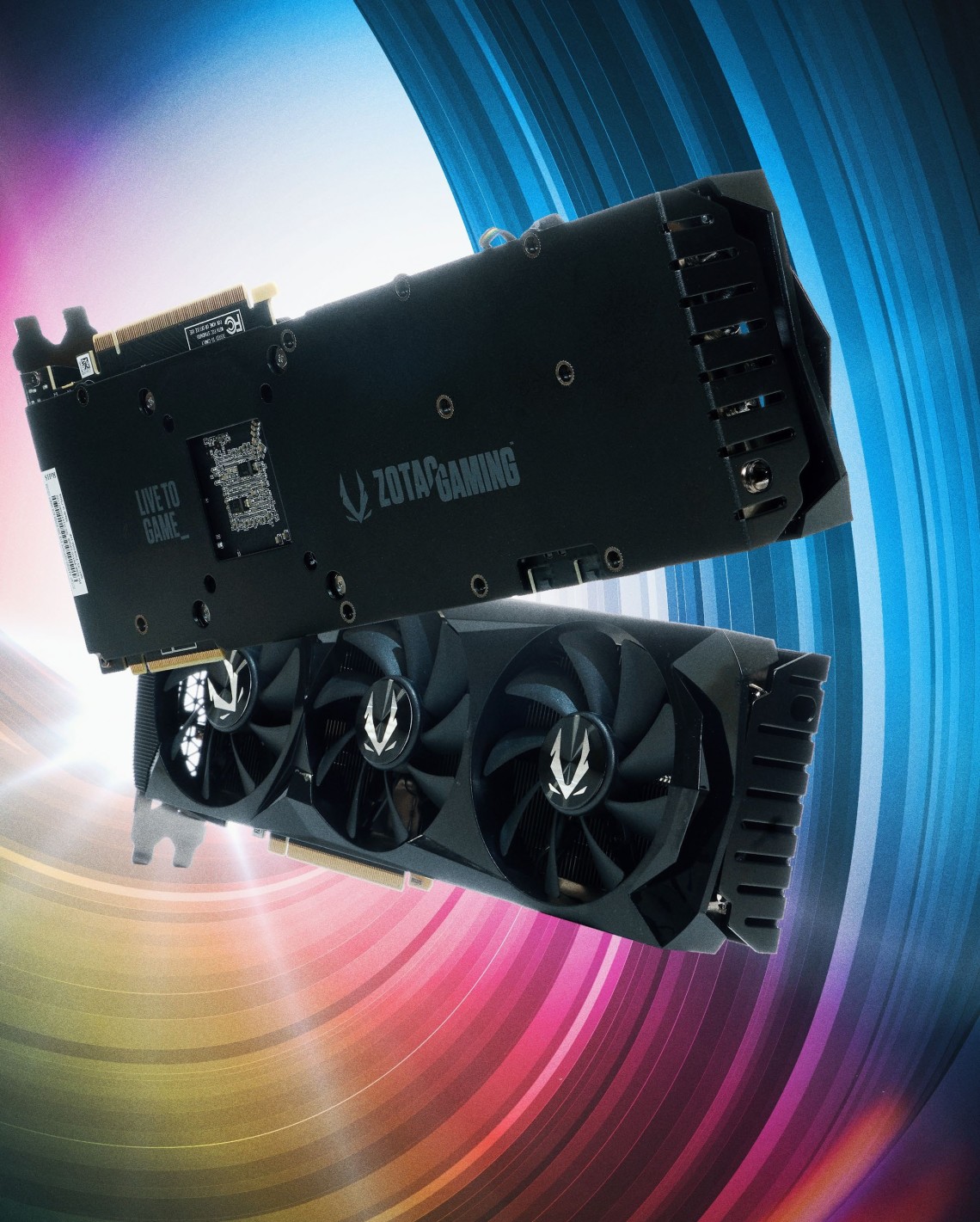
AT A GLANCE
BASE/BOOST CLOCK
1,650mHz/ 1,815mHz
POWER CONNECTORS
1x 8-pin, 1x 6-pin
DIMENSIONS
30.8 x 11.30 x 5.70cm
PRICE
$1,099
The Zotac Gaming GeForce rTX 2080 Super Triple Fan may just be one of the best value-for-money options in this shootout. At $1,099, it’s the most affordable card here. You get a pretty no-frills card, but one that feels like it’s cutting back on fat as opposed to skimping on essentials.
The only rGb illumination is on the Zotac Gaming logo on the card’s side, customisable in the Spectra tab of Zotac’s FireStorm software.
This is a triple-fan card, and it already seems like a better option than the GALAX. The two are priced really similarly and are clearly both targeted at those who aren’t looking to spend more than they need to on an already expensive Gpu. However, Zotac serves up a more robust cooler and displays more thoughtful attention to detail.
For example, a die-cast metal jacket between the pCb and heatsink provides full coverage of the pCb and prevents flexing. It also serves to dissipate heat from crucial components such as the VRM and mOSFeTs. The extra metal plate really does help the card feel more rigid. I like how the metal backplate wraps around the front of the card too, creating an impression that the pCb is well reinforced and protected. There’s a cutout for the Gpu die in the backplate, perhaps for better ventilation?
This is a rather long card, measuring a good 30.8cm. However, the pCb doesn’t quite span the full length as both heatsink and backplate extend beyond it. it feels like Zotac took the reference pCb and slapped a custom cooler on top.
The three 90mm fans share two individual fan controllers, which in turn let the fans be controlled independently of one another. This allows each fan to ramp up or down as needed, minimising noise where possible.
The card relies on one 6-pin and one 8-pin pCIe connector for power, the same as the Founders edition model. Display connectors are slightly changed though, with three Displayport 1.4 and one HDmI 2.0b outputs at the rear.


